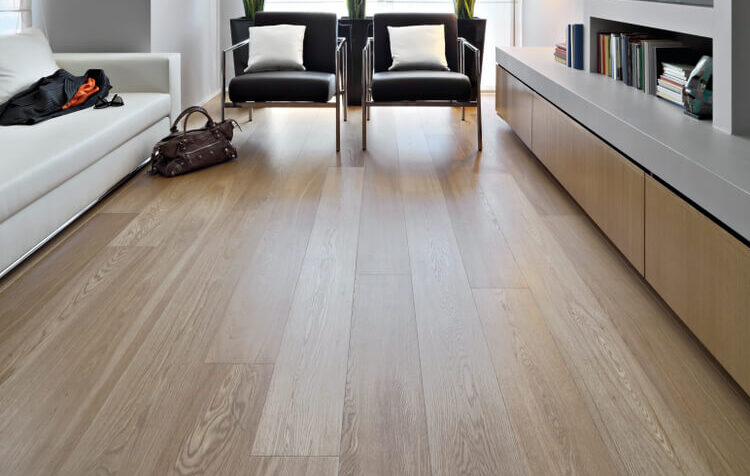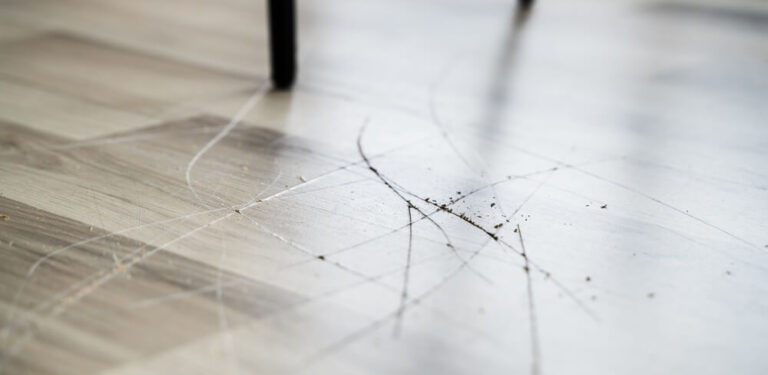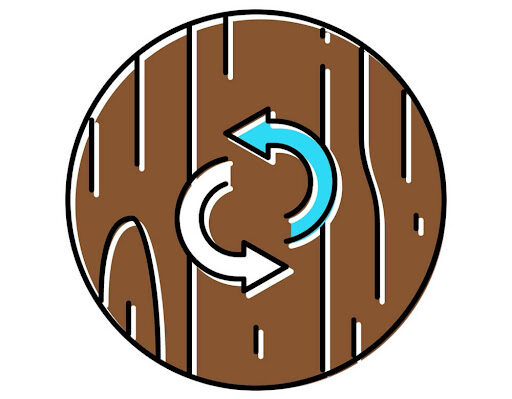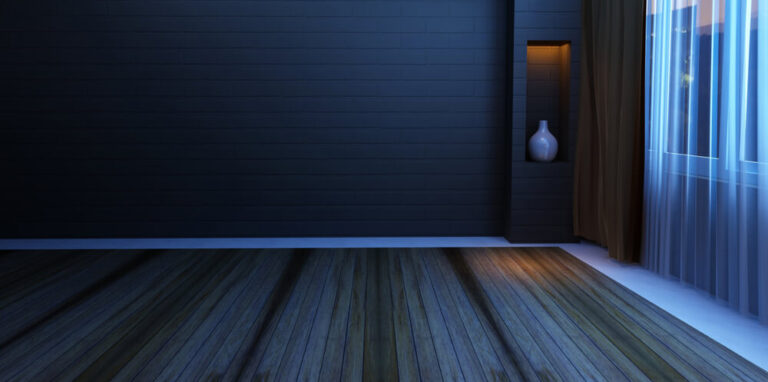
Hardwood floors give an aesthetic appearance to homes but they get scuffed, scratched or lose their shine with time and require darker staining or refinishing. Restoring can be done through many ways but they are usually expensive like replacing floors or sanding. Being home improvement experts we also restore hardwood flooring without sanding.
Yes, hardwood floors can be stained darker to restore its original finish in some simple steps. Prepare the room, buff the floor, apply wood conditioner, perform a spot test, stain the floor darker, and seal it.
In this article, we will discuss the correct way to darken the wooden floor without sanding, important factors to consider before staining and some important relevant questions.
Can You Change Hardwood Floors Color Without Sanding?
Usually refinishing starts with sanding but it is a very energy-taking, time consuming, and expensive procedure which is why people think of other ways of hardwood floor staining without sanding.
Homeowners usually ask, “Can I change hardwood floor color without sanding?” The answer is pretty simple. Yes, wooden floors can be made look newer without sanding by staining them darker or polishing them with a good quality polisher. Sanding is avoided in following conditions;
- When the floor has no damage like scratches, cuts or any other defect.
- When the surface of the floor is smooth. You just need to clean and buff the floor for smooth stain application and perfect finish.
- When there is no layer of polisher or any other coating on floor that prevents the sticking of stain to the wood.
- When the floors are new, they contain a smooth surface.
- When the old floors are not protected by sealer.
Start by cleaning the room by mopping the floors with bleach or vacuuming it. You can also use a hardwood floors abrasion refinishing kit that contains a paste called a chemical etcher that prepares the floor surface for perfect stickiness of stain to floors.
Things To Consider Before Staining Wood Floors Darker
Staining wooden floors without sanding is not everyone’s cup of tea. Stain is one of the most important elements in the process. Be very careful throughout the process from beginning to end. Given below are some of the important factors you must consider before staining.
1. Wood Type
Wood has different species that have different stain absorbing abilities. Analyze what type of wood you have in your room and choose the stain accordingly.
For example oak wood can be coloured easily with a mild stain whereas, some woods having tighter grains and tiny pores like maple, pine and birch require a strong stain to get coloured. Therefore, it is suggested to check your wood species before buying your stain. Otherwise, you have to lay hardwood floors differently in different rooms.
A pro tip: Use a stain installer for smooth application of stain. Perform a spot test and get an idea of what exact color of stain you will get on your floors..
2. Aesthetics Of Your Room
Decor of your room plays an important part in the selection of stains. Color of your floors may make or break the aesthetics of your room. Lighter stains give a very bright look to your dark room, medium stains go well with most of the decor, whereas, darker stains restores the old floors, and add a modern look to your room.
Multiple shades are available in dark stains. Check which one goes perfect with wall paint, furniture and style of your room.
3. Lightning Of Your Room
The Lighting of the room greatly impacts the color of your hardwood floors. Bright white lights add a balance to your dark colored hardwood floors. On the other hand, warm lights give a dull, calm, and peaceful effect to your room. Decide the stain of your floors according to the lightnings and your personality.
4. Stain Quality
Floors are the major component of your home interior therefore, never compromise on its stain quality. Low quality stains fade away too early causing damage to the aesthetics of the room. You would need to stain your floors again and again. This will cost you so much time and money. Being home designers, we suggest you invest in quality stains and be worry free for a long time.
These were some of the important factors to be considered while staining the wooden floors. Besides these things, you must follow the correct method for staining wooden floors darker.
How To Darken Hardwood Floors Without Sanding?
Staining hardwood floors darker without sanding is not hard without sanding unless you are following the right method. Follow the step by step guide given below:
1. Prepare The Area
Remove all the furniture and other households from the room which you want to stain. Once the room is empty. Analyze the floor and look for the damage. If your floors are fine with a smooth surface.
Clean the area to remove debris, dust, wax, polish, or other waste material. You can vacuum clean hardwood floors, spray mild vinegar solution, or mop to clean hardwood floors. Never use mop with flooding water because it may swell the hardwood floors. Damp mops are always preferred. Use knives to scrape off some hardened debris.
2. Buff The Floor
Buffing is the removal of old varnish from the surface of hardwood floors without damaging the real inner wood. It removes the minute scratches and small imperfections on the upper layer of the wood. Buffing is considered a safer alternative to sanding.
Before buffing, check the floor. There should be no protruding nails, material buildup or any other disturbing thing. Wear the dust mask, respirator and safety goggles.
Place the buffer in the middle of the room. Start buffing from the center of the room. Once you have full control over the buffer’s movement, then move towards the sides of the room. It is preferred to buff along the direction of wood grain. Do not over buff a particular area.
After complete buffing, clean the area by vacuuming or dry mopping it to remove dust.
3- Apply A Pre-Stain Wood Conditioner
Wood conditioner prepares the hardwood floor for better penetration and absorption of stain into hardwood floors. Missing it would cause an uneven, blotchy and rough application of stain.
Pour some conditioner on neat and clean cloth and deeply apply it on the wooden floor. Don’t forget to apply in the corners. Let it dry completely and then proceed further.
4. Spot Test
This is an important and necessary step in stain application. Before applying stain to the entire floor, perform a spot test at any side area of the room. Let it dry for 24 hours. Observe if there is any residue formation on that spot, buff that area again. If you find no dust or granulation. You are good to go for a stain application in a complete room.
5. Stain The Floor Darker
It’s a time to pick a high-quality dark colored stain to add a modern, trendy and aesthetic appearance to your room. Darker stains are beneficial for slightly rough hardwood floors. They also help you remove old black urine stains from hardwood floors.
Use a paint brush with fine bristles, or spray bottle to stain the wooden floor evenly. It is recommended to coat 2-3 layers of paints. Once the first coat is completed, wait till it dries, and then apply a second or third coat.
According to a book, a grey-brown chemical stain shows more prominently in highly humid and poor drying conditions.
6. Apply a Sealer
Once the floor is completely stained, protect it by applying a layer of protective sealer. Like, polyurethane, gel stains, or varnishes. They protect the original stains from scratches, scuffs, water or other damages and provide a very glossy look and fine finish to the floors. According to research, harder coating offers higher tensile strength and lower elongation of hardwood floors.
Following these helpful steps will make the staining process much easier.
FAQs
Here are some of the commonly asked questions;
1. What Causes Dark Stains On Hardwood Floors?
Usually, wood contains tannins in them. When any wrong stain or finishing product is applied on it, it reacts and causes dark stains on hardwood floors. Placing iron-made furniture on a damp floor also causes dark patches on the floor due to iron and water reaction. Some other household issues like pet urine, spilling of nail polish, sprays exposure also causes darkening of wooden floors
2. Can You Use Gel Stain On Hardwood Floors?
Gel Stain Floors Without Sanding gives a new life to old and worn hardwood floors. It does not penetrate deep into the wood, sits on the surface, and gives a very glossy appearance to the floor. It is a safer option instead of replacing or refinishing hardwood floors of the entire room.
3. Can You Restain Hardwood Floors Without Sanding?
Yes, hardwood floors can be changed without sanding by buffing it thoroughly, proper cleaning and applying a good polisher. You can restain floors according to your choice without being heavy on the topic.
4. How Much Does It Cost To Stain Hardwood Floors Darker?
On average, staining hardwood floors costs around $1-$3 per square feet.. This price may vary depending on different factors, like level of buffing, quality of stain, number of coats, and labor cost in any particular geographic area. You may get a quote according to your preferences from an expert.
5. What Does Vinegar Do To Hardwood Floors? [h3]
Since vinegar is an acid, it cuts down the color of the hardwood floors. It provides a shiny look for instant but damages the floor on longer use. It is used with water to clean the floor which is also harmful to cause swelling of the floors.
Conclusion
Are you tired of boring and damaged hardwood floors? But thinking about getting a budget friendly repair. Staining hardwood floors darker without sanding is the best suitable option for you. This sandless coloring of the floor is less labor- intensive and a cheaper process.
Besides this, if budget is not your concern, we suggest you sand and refinish bruce hardwood floors before staining for a perfect shiny look.







